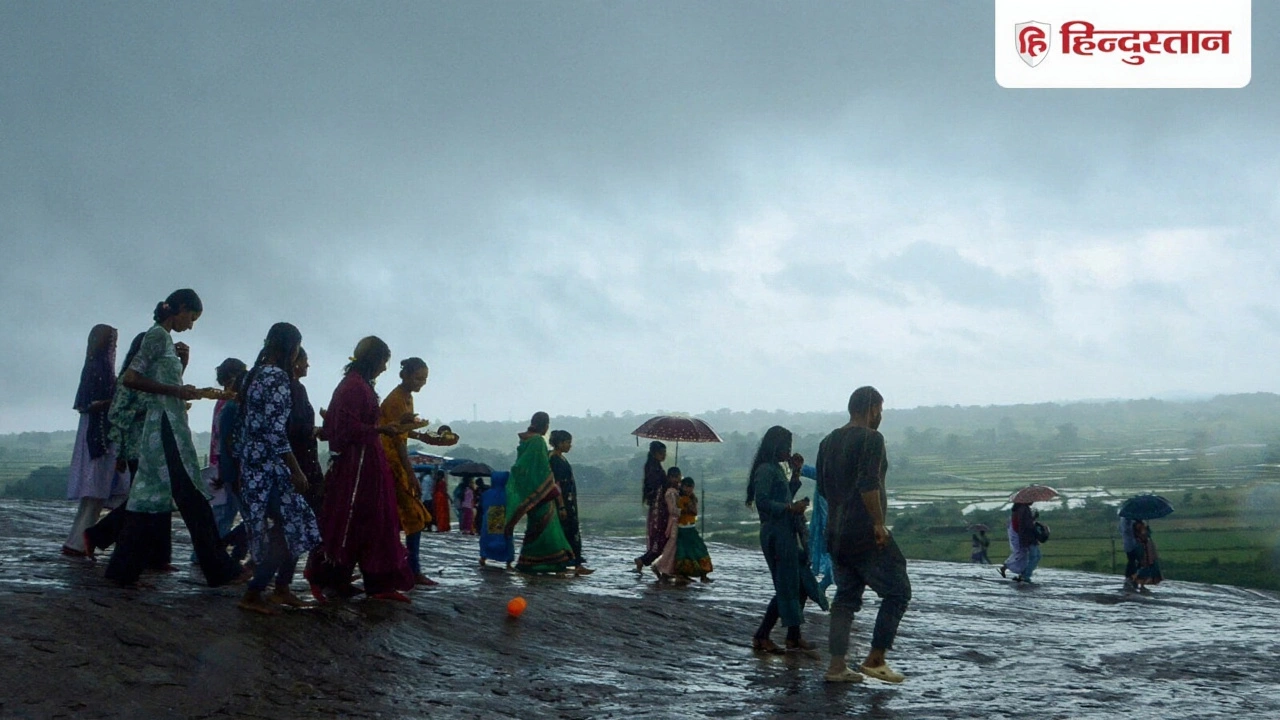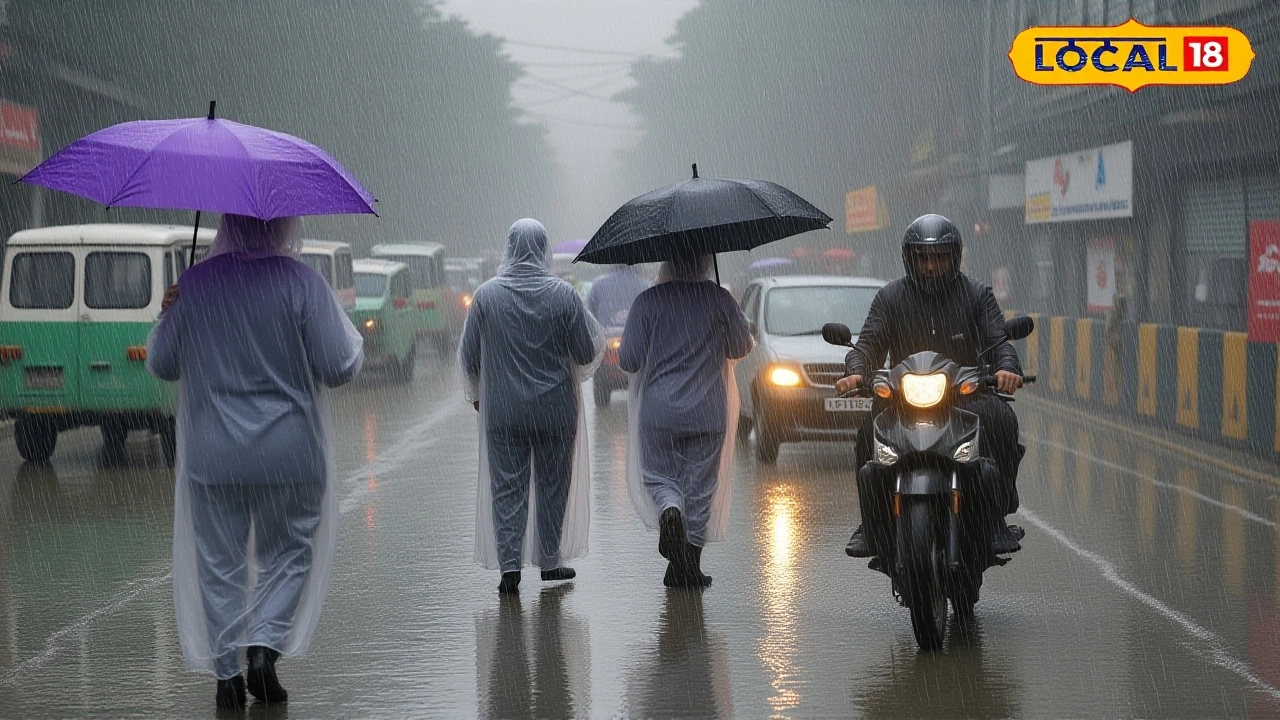When Dr. Anil Kumar, Director of the Indian Meteorological Department issued a special alert on October 6, 2025, residents from Saharanpur to Badaun braced for an unusual mix of heavy rain, hail and gusty winds. The warning, tied to a strong Western DisturbanceNorthern India, is expected to roll across the western belt of Uttar Pradesh over the next two days, bringing relief from the lingering heat but also posing safety concerns.
What is a Western Disturbance?
A Western Disturbance is a low‑pressure system originating over the Mediterranean that travels eastward, picking up moisture across Iran, Afghanistan and the northern plains of India. By early October, these systems often clash with the retreating monsoon, generating thunderstorms, hailstorms and sudden temperature drops. Meteorologists say the current disturbance is stronger than average, with wind speeds forecast at 30‑40 km/h in the affected districts.
District‑by‑District Outlook
The IMD’s forecast pinpoints several hotspots:
- Saharanpur – scattered showers turning to hail after 02:00 IST, with lightning expected to be frequent.
- Meerut – heavy rain accumulating up to 30 mm, accompanied by gusts that could uproot weak trees.
- Badaun – the western edge of the alert zone, where hailstones up to 1 cm have been reported in nearby villages.
Other districts under the alert include Shamli, Muzaffarnagar, Baghpat, Hapur, Bulandshahr, Aligarh, Bijnor, Amroha, Moradabad, Rampur and Sambhal. In the eastern sector—places like Lucknow and Varanasi—meteorologists anticipate only light rain and isolated thunderstorms.
Official Responses and Coordination
Besides the IMD’s bulletins, the National Disaster Management Authority (NDMA) has activated its regional response teams. The agency’s spokesperson, Ritu Sharma, said, “We are on standby to mobilise relief kits and rescue crews if the hail damages crops or infrastructure.” State‑level officials in Uttar Pradesh have also ordered district magistrates to set up temporary shelters and to keep road crews ready for clearing debris.
Public Safety Advice and Expert Commentary
Local authorities urge people to avoid travel on rural roads after dark, secure loose objects from rooftops, and keep emergency kits handy. Farmers, who have been battling drought conditions for months, are advised to protect newly sown seedlings with netting to minimise hail damage.
Climatologist Prof. Meera Joshi of the Indian Institute of Tropical Meteorology explained, “While Western Disturbances are a regular feature, the intensity we’re seeing this year is linked to a stronger than usual temperature gradient between the Himalayas and the plains. It’s a reminder that extreme weather can arrive even in the post‑monsoon period.”

Historical Context: A Pattern of Early‑Season Storms
October 2021 witnessed a comparable disturbance that dumped over 80 mm of rain in Saharanpur, triggering floods that claimed three lives. In 2019, a hailstorm in Meerut caused damage worth roughly ₹2.3 million to vehicles and crops. These events underscore a growing pattern: as climate variability intensifies, the frequency of intense, short‑duration storms in northern India appears to be on the rise.
What’s Next? Monitoring Through October 8
The IMD will release hourly updates through a dedicated portal, and the NDMA has promised to issue real‑time alerts via SMS to registered residents. If the disturbance weakens after October 7, officials expect a quick return to clear skies, but they warn that residual moisture could fuel isolated thunderstorms into the weekend.
Frequently Asked Questions
How will the hail affect farmers in the warned districts?
Hail can shred young sprouts and damage irrigation equipment. Experts recommend covering fields with mesh netting and keeping spare seeds ready for re‑planting if crops are lost. The state’s agriculture department has earmarked ₹15 million for emergency assistance to the most affected farmers.
What is the difference between a Western Disturbance and a typical monsoon system?
A Western Disturbance originates from the west‑northwest and brings cooler, drier air, often causing brief but intense showers and hail. In contrast, the monsoon draws warm, moisture‑laden air from the Bay of Bengal, resulting in prolonged, widespread rain. The two can interact, amplifying storm intensity when they overlap.
Are there any transportation disruptions expected?
Local road authorities have warned of possible slippery conditions on highways linking Saharanpur, Meerut and Badaun. While major rail routes remain operational, occasional delays are likely if hail accumulates on tracks. Commuters should check the Indian Railways app for real‑time updates.
What safety measures should residents take during the storm?
Stay indoors, keep windows closed, and avoid standing near tall trees or power lines. Keep flashlights, batteries and a small supply of water and food ready. If you must travel, steer clear of low‑lying areas prone to flash floods.
Will the heat wave that plagued Uttar Pradesh this summer finally end?
The incoming Western Disturbance will bring a noticeable temperature dip—usually 3‑5 °C lower than the previous week—providing temporary relief. However, experts caution that heat may rebound once the system moves eastward, so residents should remain prepared for fluctuating temperatures.
